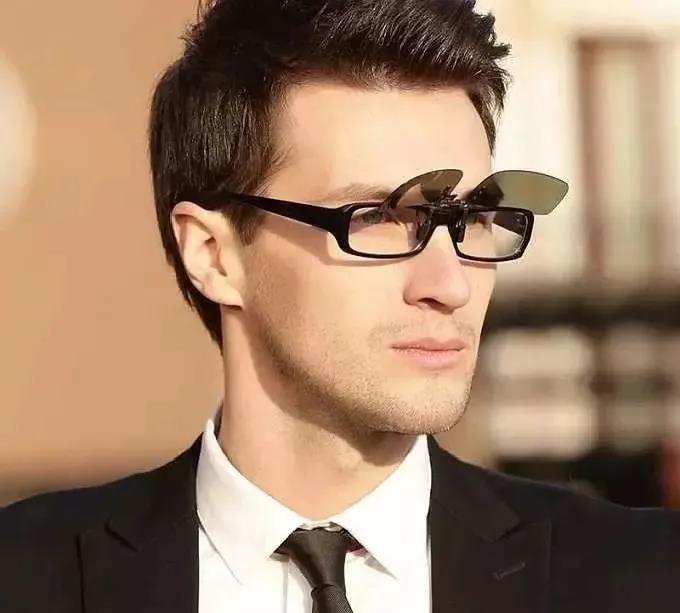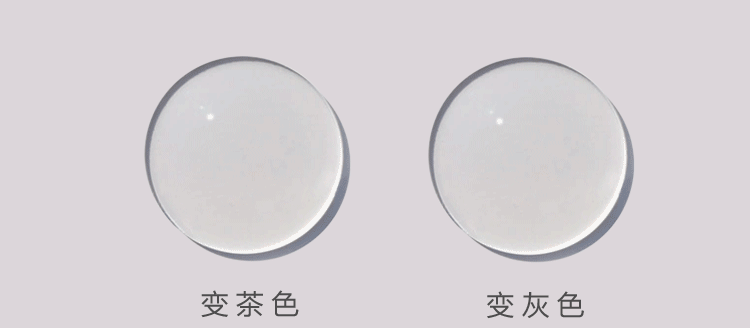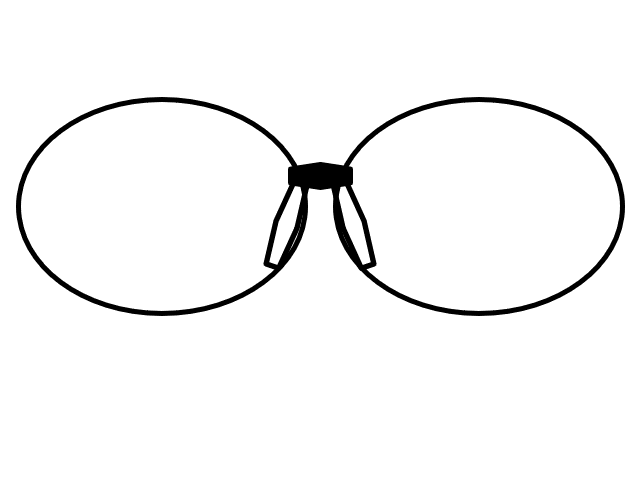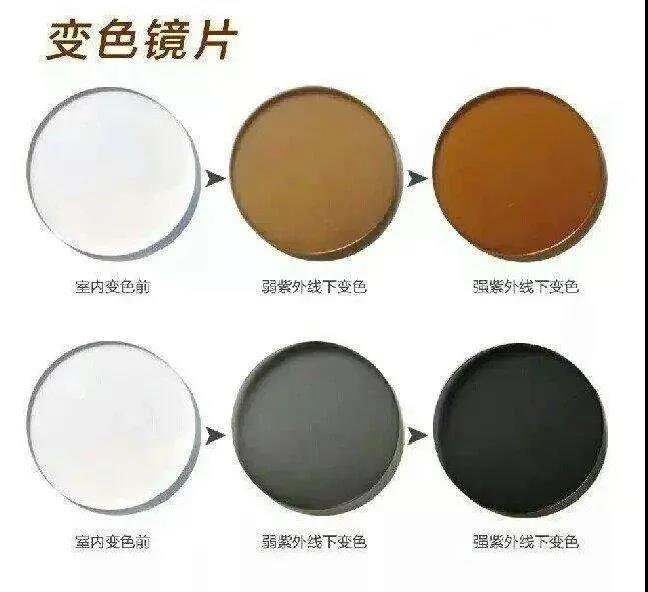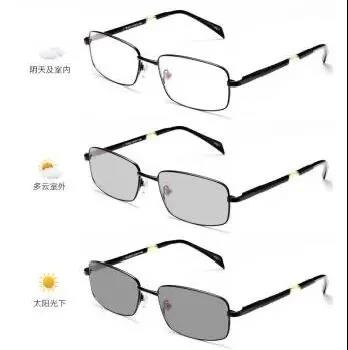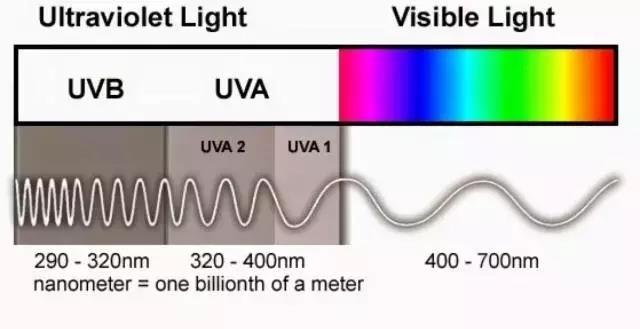The summer is scorching hot, prepares the small long vacation to go outing the friends to be possible comfortably to go out to enjoy the sunlight. But for the friends who wear glasses, but eyes photophobia, can not follow the heart to wear sunglasses or need to wear two glasses of distress.
A lot of wear myopic glasses of small partner, a spring summer season has a headache unceasingly: again myopic how to wear sunglass again need to protect from the sun? Daily Commute sunscreen skin can not prevent eye how to do? Myopic drive how should do again?
Take a look at the image above. Would you rather wear tinted glasses with dioptre's number on them, or glasses with sunglasses in them?
In the hot Sun or light reflection serious snow, water, light will produce great stimulation to the eyes. At this point, people often choose sunglasses to reduce the light to the eyes of the stimulation.
But when people wear sunglasses, in the dark room will not be able to see objects and environment, especially for short-sighted friends, it is simply "two black eyes" , sunglasses are not so convenient. Therefore, the best way to protect your eyes from UV damage while also taking care of refractive problems is to wear uv-resistant tinted glasses. Color-changing glasses is indeed a convenient and practical glasses, but you know why the Lens will change color? What are the advantages of color-changing glasses?
1、Why can chromotropic Lens Change Color?
Color Changing Lenses, actually called Photochromic Lens, are lenses that change color depending on the intensity of ultraviolet light and temperature. It is in the ordinary resin lens to add different photosensitizers, such as silver Halide, silver barium acid, copper halide and chromium halide. After the change of color can be a different color, such as tawny, Tawny Gray, gray and so on.
Principle of discoloration:
When the discoloration Lens is manufactured, the appropriate amount of silver halide is added as the photosensitizer. Silver Halide is the IONIC compound of Halogen and silver. The silver halide present in the color-changing mirror is a tiny crystal with very small particles and is uniformly dispersed in the Lens. Because uniform and small, so when the light irradiation, generally do not appear to spread phenomenon. This also makes the tinted glasses look as clear and transparent as regular glasses. When illuminated by light (especially short-wave light) , the silver halide molecules in the Lens break down into silver and halogen atoms, which reflect or scatter the light, the accumulation of many silver atoms causes the lenses to appear light black, or gray.
The color-changing Lens is a solid. Although the silver halide crystal will decompose under strong light, the silver and halogen atoms produced by the chemical reaction are close to each other and will not escape, when the light stops, it reverses to the silver halide state immediately, thus making the lens transparent again. In addition, a very small amount of copper oxide was added to the color-changing Lenses, which acted as a catalyst and accelerated the decomposition of silver halide under strong illumination.
2、Discoloration Technology of Discoloration Lens
At present, there are mainly two kinds of color-changing technology on the market: Film color-changing and substrate color-changing.
Film discoloration ":refers to the surface of the lens coating discoloration agent, characterized by a light background color close to colorless, also known as spin-coated film change.
Advantages: rapid color change, color change more uniform.
Disadvantages: encounter high temperature color effect may be affected to a certain extent. Because the expansion coefficient of the color-changing film is not the same as that of the functional film on the surface of the Lens, the film May Crack under the long-term temperature change (indoor and outdoor switching) .
Substrate discoloration ": is in the lens material monomer raw material processing link already mixed ahead of time in the discoloration agent.
Advantages: fast production speed, high cost-effective products.
Disadvantages:The Height of the Lens and the middle part of the edge of the color will be different, the aesthetic degree is not as good as film chromotropic Lens.
3、Change of color of discoloration Lens
The darkening and lightening of color changing lenses are mainly related to the intensity of ultraviolet radiation, and the intensity of ultraviolet radiation is also related to the environment and season.
Sunny Days: The morning air clouds thin, less UV blocking, therefore, the morning of the color-changing Lens will be darker. In the evening, the UV light is weaker and the lenses are lighter.
Overcast: UV light is weak on overcast days, but it can still reach the ground, so tinted lenses can still change color to protect you, making it lighter than on sunny days.
Temperature: under normal temperature conditions, as the temperature increases, the color of the color-changing lenses will gradually become lighter as the temperature increases; conversely, when the temperature decreases, the color-changing lenses will gradually become darker. Simply put, this is because when the temperature is high, the silver and halogen atoms that have already been decomposed will be reduced to silver halide again under the action of high energy, so the color of the lens will become lighter.————————This is why, in summer, although UV radiation is intense, the high temperature and high heat on the surface of the lenses can not cause the lenses to be very dark, its UV energy is actually equal to the summer UV exposure, but the lens surface temperature is low, the color will be deeper.
Indoors: Tinted Lenses rarely change color and remain transparent and colorless indoors, but they can still change color if they are exposed to ambient UV light, providing instant UV protection.
4、Why do we choose tinted lenses?
With the increase of Myopia, people need more and more color-changing lenses, especially in spring and summer, hot sun, strong ultraviolet rays, it is likely to cause damage to the eyes.
Ultraviolet radiation from the sun is divided into four bands according to the wavelength: UVA, UVB, UVC, UVD. UVA and UVB are the main ones that penetrate the atmosphere and reach the surface.
UVA, that is, UVA, UVA, UVB, UVB, UVB, UVB, UVB, UVB, UVB, UVB, UVB, UVB, UVB, UVB, UVB, UVB, UVB, UVB, UVB, UVB, UVB, UVB, UVB, UVB, UVB, UVB, UVB, UVB, UVB, UVB, UVB, UVB, UVB, UVB, UVB, UVB, UVB, UVB, UVB, UVB, especially in the summer and afternoon.
Our eyes can absorb a wide range of wavelengths of UV, long-term excessive absorption of UV may cause eye damage:
macular degeneration: over time, retinal damage caused by macular degeneration (AMD) , and is the main cause of age-related blindness. PROLONGED EXPOSURE TO UV light increases the risk of macular degeneration.
CATARACT: A cataract is a clouding of the lens of the eye, the part of the eye in which light is focused. Exposure to ultraviolet light, especially UVB, increases the risk of certain types of cataracts. It is estimated that 10 per cent of all cataract cases are directly attributable to UV exposure.
PTERYGIUM (N) : Often referred to as “the surfer’s eye, ” PTERYGIUM is a pink, non-cancerous growth that forms on the conjunctival layer above the eye. And ultraviolet light is thought to be a contributing factor.
Heliokeratitis: also known as corneal Sunburn or “snow blindness, ” Keratitis is the result of high short-term exposure to UVB rays. Prolonged skiing on the beach or without proper goggles can cause the problem, which can lead to temporary vision loss.
Therefore, for the need for Sunscreen and myopic people change the trouble for the eyes sunscreen is the first choice of color-changing lenses.
Post time: Jul-30-2021

